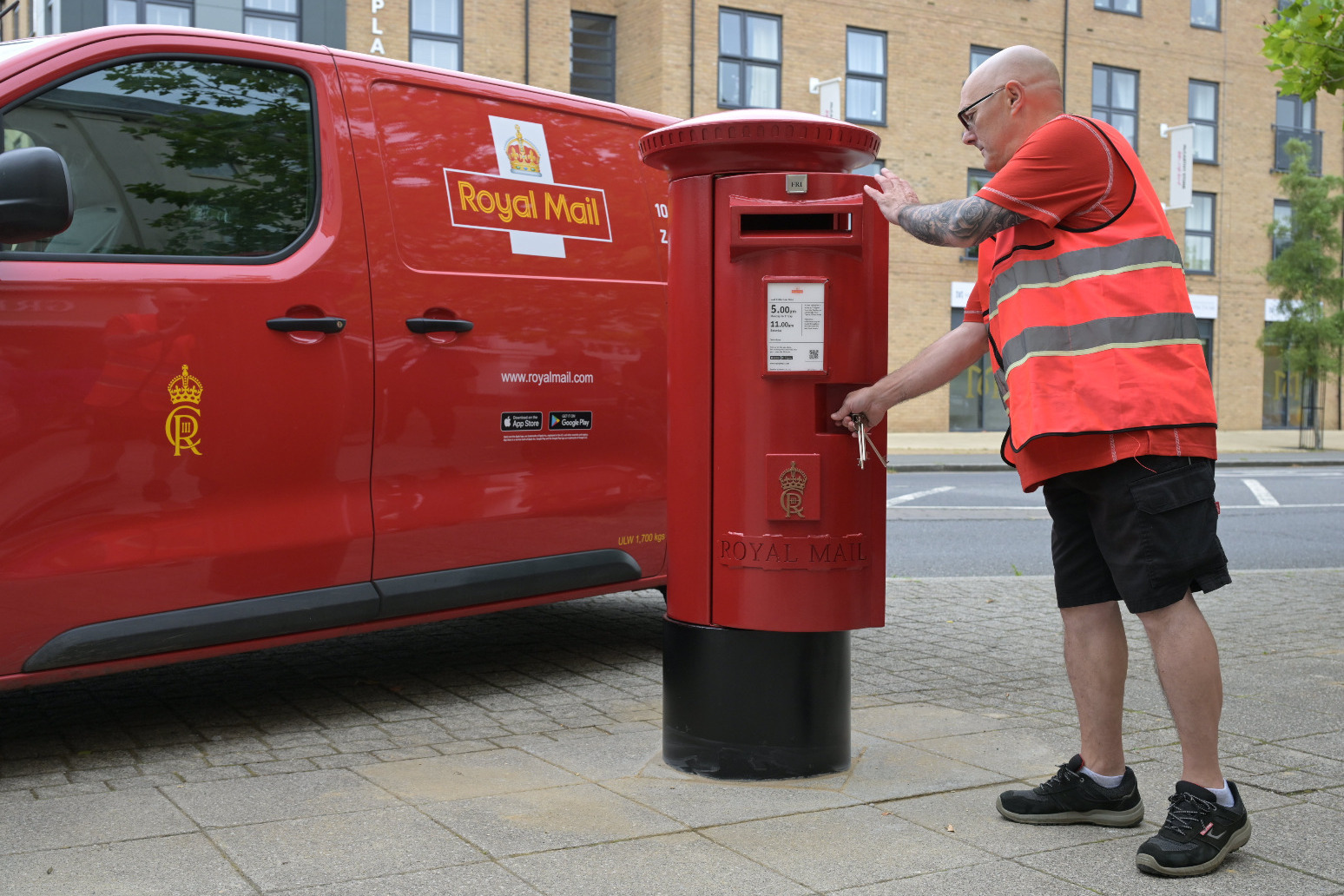
Royal Mail installs first red postbox featuring King’s cypher
It's located in Great Cambourne, south Cambridgeshire
The first red postbox bearing King Charles III’s cypher has been installed, the Royal Mail has announced.
The historic round pillar box, considered a British classic, is on the High Street in Great Cambourne, south Cambridgeshire.
Youngsters from Vine Inter-Church Primary School in Upper Cambourne helped unveil the addition to the village on Friday and posted the first letters into the freestanding stainless steel structure – handwritten notes addressed to the King.
Charles has granted the Royal Mail special use of his monogram, which is his personal property.
His cypher consists of his initial C, with the roman numeral III and an R for Rex – Latin for King – under a Tudor Crown.
The unveiling continues the 170-year-old tradition of stamping red postboxes with a royal cypher, dating back to the reign of Queen Victoria.
Emma Gilthorpe, Royal Mail’s chief executive, said: “More than 115,000 postboxes across the UK have recorded the succession of monarchs since the first box bore the cypher of Queen Victoria.
“We thank His Majesty for granting us the use of his personal cypher as we begin the next chapter in the story of the iconic Great British postbox in Great Cambourne.”
A commemorative plaque records the special status of the historic postbox.
A number of new or replacement postboxes have been installed since Charles acceded to the throne in 2022, but existing stocks carrying the cypher of Queen Elizabeth II were used until now, in order to prevent wastage.
Existing boxes will be kept as they are, retaining the cypher from the period in which they were installed.
The King’s cypher will also be applied to the doors of the Royal Mail’s fleet of vehicles, replacing the late Queen’s, with an initial rollout of 100 trucks on Friday, followed by a further 290 over the next six weeks.
In total 3,636 vehicles will be updated between August and October this year.
Coinciding with the unveiling, the Royal Mail announced a change in its brand logo, known as the Cruciform.
The logo with its yellow double lined lettering of Royal Mail, used on the company’s vehicle livery, buildings, website and stationery, will now feature the rounded Tudor Crown used by the King, rather than the arched St Edward’s crown used by the late Queen for her cypher.
But, in line with guidance from the royal household and in keeping with the King’s eco-credentials, it will only be applied to new or replacement signage, stationery and vehicles to avoid unnecessary costs and waste.
The primary school pupils, in their letters posted in a joint envelope using special coronation stamps, wrote to Charles asking his advice on achieving a sustainable future and formally inviting him to open their new forest school, which forms part of the school’s bid to become carbon neutral.
The King’s cypher will, however, not be applied to new postboxes in Scotland.
Since 1955 Scottish postboxes have been distinguished by the St Andrews crown rather than the monarch’s cypher.
At the start of the late Queen’s reign in 1952, there were objections in Scotland to her being styled Elizabeth II because the Tudor queen Elizabeth I was never a queen of Scotland.
A pillar box in Edinburgh bearing the EIIR cypher was defaced and later blown up.
Its replacement was left blank, and the UK Government later agreed only the Crown of St Andrew would be used for postboxes and Royal Mail vehicles in Scotland.
There will be no change of policy on future postboxes in Scotland, Royal Mail said.
British postboxes were first introduced in 1852 with a trial of cast iron pillar boxes in the Channel Islands after author Anthony Trollope, who was working as a surveyor’s clerk for the Post Office, proposed the idea after reportedly seeing roadside letter boxes in France and Belgium.
By 1853, they appeared on the UK mainland and were standardised in 1859 – but were originally green.
The switch to a striking red came about in 1874 after complaints that the green ones were so unobtrusive they were hard to find.
Published: by Radio NewsHub